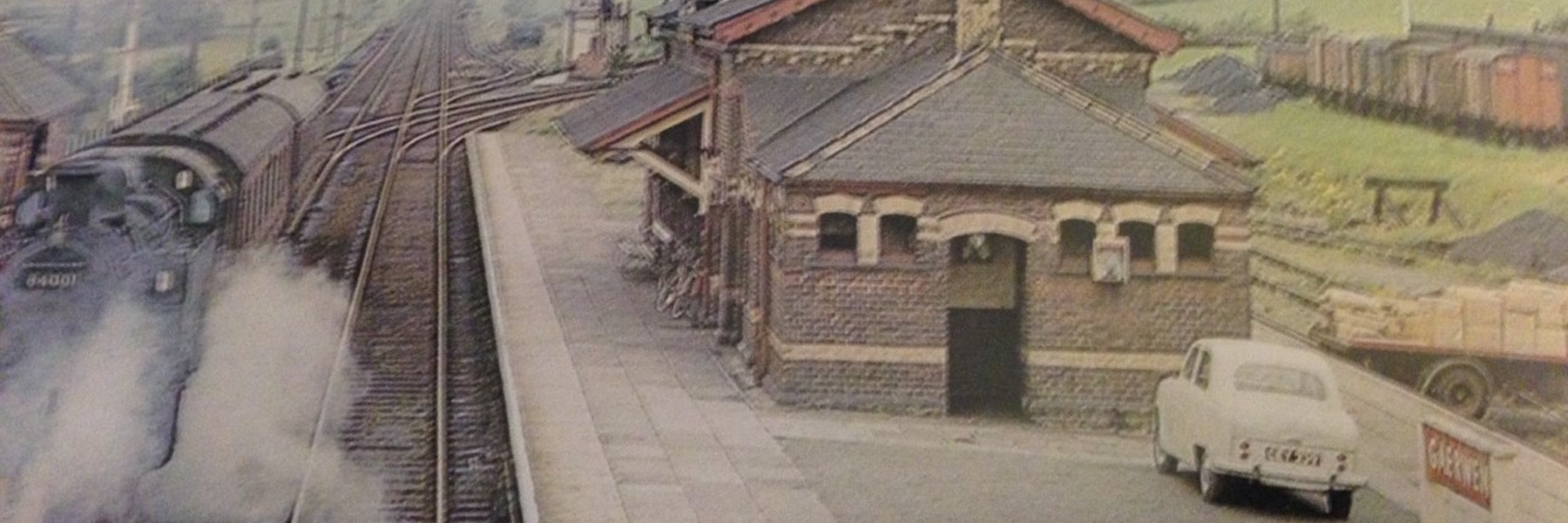The original Anglesey Central Railway was promoted by local residents. The prime mover was William Dew of Llangefni, a successful estate agent. A meeting was held on 5th of July 1858. Sir Richard Bulkeley took the chair and William Dew who was the chief speaker made a strong appeal for the £150,000 needed to launch the venture. The railway was to run from Gaerwen station through Llangefni, on to Llannerch y Medd terminating at Amlwch Port. From there a branch line was eventually to be laid in the direction of Cemaes, then on to Llanrhuddlad to rejoin the main Holyhead line at Valley. (The proposal was over ambitious and never came to fruition).

This poster was produced by Roy Ashworth - our Lein Amlwch artist, depicting the history of both the Anglesey Central Railway (Lein Amlwch) and the long gone Holland Arms to Red Wharf Bay/ Benllech line over the years
The plan provided for 18 miles of permanent way from Gaerwen to Amlwch Port, which would cost, it was estimated £7,000 per mile, including the cost of building stations. It was stressed that from the outset this was to be Anglesey’s own railway, built to suit the convenience of Anglesey people.
The requisite measure was passed by Parliament in 1863. On the 11th of September that year Mrs W. Bulkeley Hughes, whose husband had become one of the main supporters of the project, broke the first ground on common land near St Cyngar Church in Llangefni. The contractors were Russell and Dickson and the engineer was Colin MacKenzie.
The first train ran from Gaerwen to Llangefni on the 16th of December 1864, with company directors and local dignitaries on board and made the journey to a temporary station at Llangefni (about a quarter of a mile south of the permanent station). About 100 passengers were entertained at the Bull Hotel, Llangefni followed by further refreshments in the British Hotel Bangor in the afternoon. A freight service began on the line about two weeks later. The public was not allowed to travel until the 8th of March 1865 after government inspectors had issued a certificate of safety. The extension from Llangefni to Llannerch y Medd was open for general use by the public on the 1st of February 1866.
The final section from Llannerch y Medd to Amlwch was opened to passenger traffic on the 3rd of June 1867, but the planned extension to Amlwch Port had to be abandoned for lack of funds.
The ACR continued to hire its stock and power from the LNWR until January 1876 when they were informed that the latter were unable to continue providing locomotives. The impoverished ACR were in no position to purchase their own locomotive and stock and were unable to enter into a proper working arrangement with the LNWR. They succumbed to the inevitable and the LNWR took possession of the line on the 1st of July 1876.
The only accident of note on any Anglesey railway during the century occurred on the Amlwch line on the 29th of November 1877. After exceptionally heavy rains that Autumn the rivers were in flood and a bridge a mile north of Llannerch y Medd known as Pont Caemawr - referred to locally as Pont Ddamwain (Accident Bridge) was washed away by the raging waters. The first morning train approached the spot in darkness and the engine plunged into the swollen river dragging with it all but one of the coaches, several of which were completely destroyed. Fortunately, there was only one passenger on this early (6.20) train. Sadly the driver, fireman and permanent way inspector lost their lives.



















